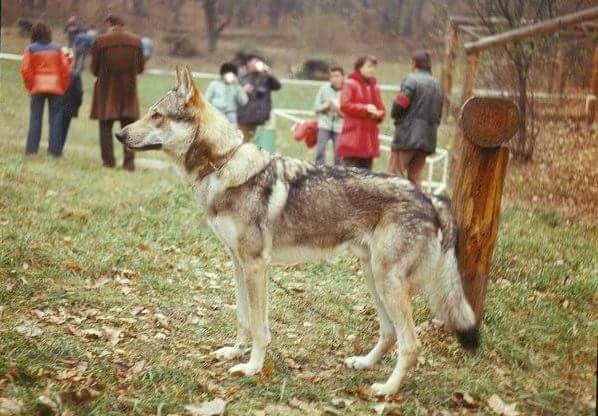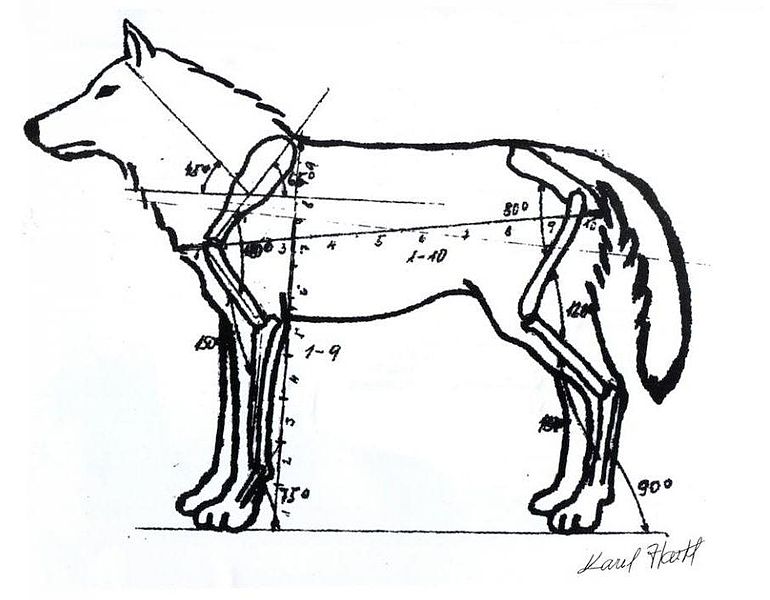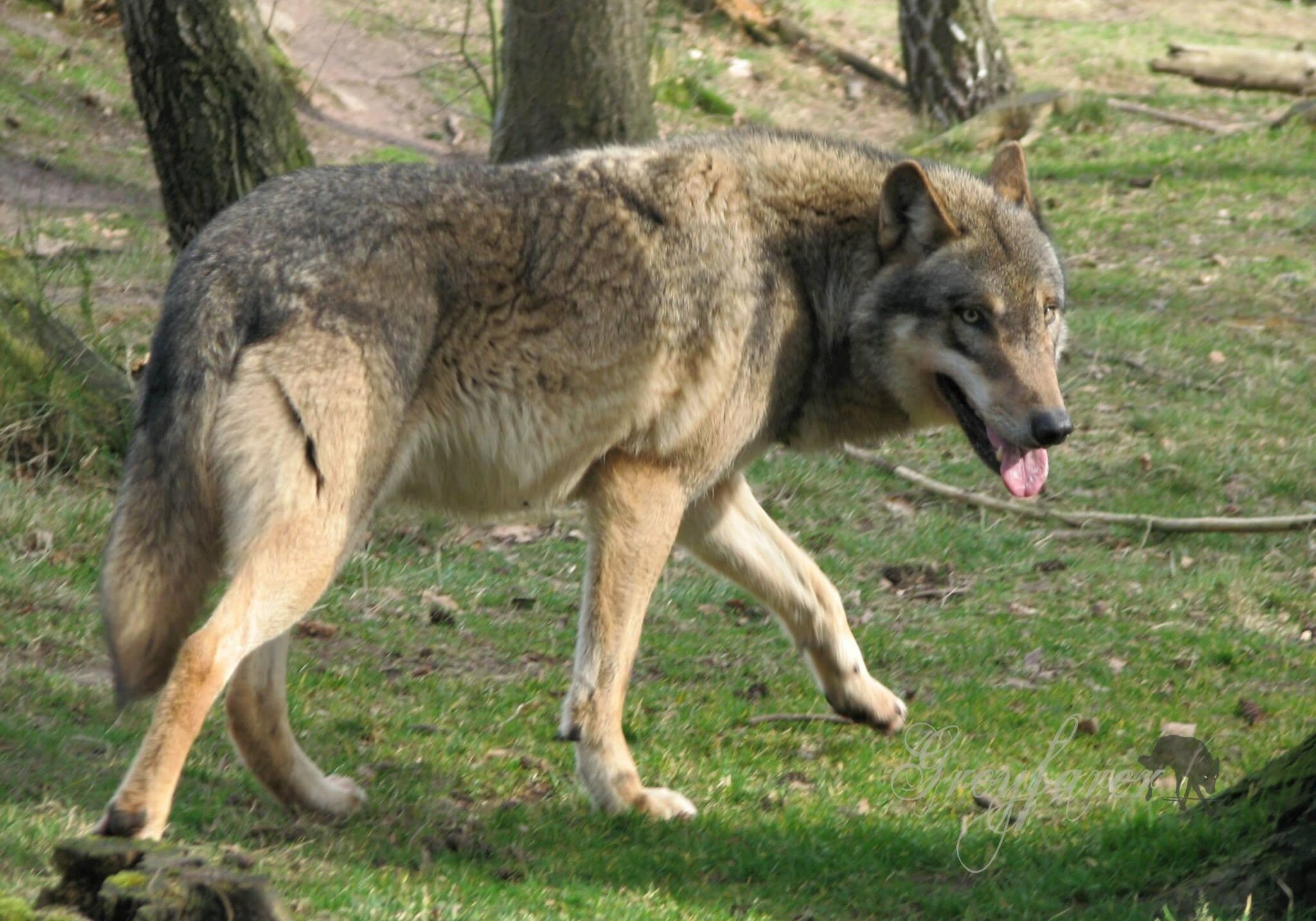
Rep z Pohranicni straze, born 1979. He is the dog on which the FCI standard is written from.
Commentary on the Standard
All serious and worthwhile breeders strive to breed close to the given standard of their breed, which outlines the features that give any specific breed their emblematic traits. Breeders must therefore be knowledgeable of the standard in order to select individuals that are good representatives and typical to the standard. To a general owner, it may not seem so important. Many people approach a breed of dog as if it was the same as a brand - within it are members that are more or less the same. This is untrue - it is only with stringent selection and a bit of luck that typical and sometimes exceptional animals are created. So it is also important that the simple pet owner also have a general idea of the standard of the breed so that they can select parents and puppies of typical litters.
What are the important points of the standard? To a novice, "a wolfish-looking dog" consists of a just few traits: it has yellow eyes, it has standing ears, and it has a big fur coat. Such simplistic understanding of the standard does not sufficiently meet the given standard and is not enough to preserve the breed traits of Czechoslovakian Vlcak.
The FCI standard given in the link above clearly outlines a dog that matches the proportions and angulation of this illustration by co-founder Karl Hartl. Although a dry read, the standard should be studied, observed, and compared within various animals to gain a more comprehensive grasp of the strengths and the faults within the breed and within individuals.
Without too much rephrasing of the already published standard, a typical Czechoslovakian Vlcak can generally be described thus:
It is a large yet light and lithe animal resembling Carpathian Wolf with straighter front and rear angulation and a relatively light chest with a compact and short torso length, the proportions not to exceed 9:10 ratio of height to length. The legs are 55% the total height of the dog - it means that Czechoslovakian Vlcak, like reflected in wolves, should be long-legged animals and have more leg in their height than body. The coat should be well pigmented in agouti shades of red and grey - we talk specifically of Carpathian Wolf - not of the Timber wolves of the Americas that may be solid white or black, or a grey without red tones. The coat must reflect the seasonal changes and the climate where he lives. In the same vein, the preferred size of the dogs reflects the height of Carpathian wolves - again, not the larger wolves of the Americas. The head is a blunt wedge shape with slanted amber eyes, not round eyes that confer a doggish expression. The mouth should have tightly fitted lips without open corners or flews. And importantly - there must be strong and evident sexual dimorphism. Males must appear masculine and females, feminine. In movement, single-tracking is correct as well as pacing at slow speeds. The head inclines to the horizontal and is not carried upright during movement.
The tendency for even all-rounder conformation judges to prefer over-angulated, heavy set (in short: doggy) Vlcaks with a lot of flash in movement is wholly incorrect, although commonly awarded. The phenotype of the Carpathian wolf should be the guide in conceptualizing what the Czechoslovakian Vlcak standard is.
Now a little about the temperament of Czechoslovakian Vlcak. These are highly observant dogs whose temperament is correct when stand-offish, as outlined in the standard as "suspicious". However, shyness should not be confounded with suspicion, and shyness is a known problem in the breed and specifically mentioned in the standard as something that is a disqualifying trait, along with aggression. A very social and open Czechoslovakian Vlcak is still preferred over a shy individual. In a Bonitation, the Czechoslovakian Vlcak breed survey required for breeding in the Czech Republic and in Slovakia, a range of temperaments are noted from Oa to Oj. It is not a pass-fail system. Whether a dog is more suspicious or more open, it must nevertheless always have a stable character capable of tolerating normal and simple dog activities like visiting other people's homes, meeting new people, going for a walk in a crowded area, handling by the veterinarian, and so on.. it is not enough to excuse poor temperament as simply being a vestige of their ancestry. Czechoslovakian Vlcak must have the correct temperament in order to be "[versatile] in his uses", however fickle it may be..



